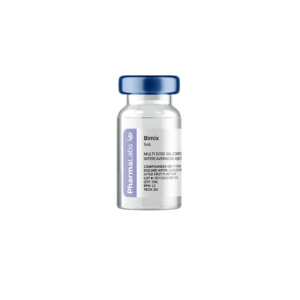Find A Doctor
menMD can help you connect with a provider
Have Questions?
- (857) 233-5837
M-F 8am-9pm EST
Sat 9am–5:30pm EST
Prostate Surgery
Radical prostatectomy is a very common surgery and is done only for confirmed cases of prostate cancer. If cancer hasn’t spread outside of the prostate gland it may be recommended by your surgeon to remove the prostate gland completely in the hopes of eliminating the cancer.
There are two general types of Radical Prostatectomy surgeries.
Men who have been diagnosed with Prostate Cancer are the most likely to have a Radical Prostatectomy but this procedure is also done for men dealing with Benign Prostatic Hyperplasia (BPH) as a long-term solution.
After a Radical Prostatectomy, light exercise such as walking can help with the healing process but you should avoid heavy lifting for several weeks.
Your healthcare provider can work with you to improve any problems with erectile dysfunction or bladder control.
There is a risk of urinary incontinence after surgery but it’s typically temporary. You may experience incontinence or leakage for a few weeks to months after the surgery.
Your doctor may prescribe you medication and/or vacuum erection devices for penile rehab and sexual activity. Sexual function is the slowest side effect to recover sometimes taking months or years.
The goal of a Radical Prostatectomy, or any treatment for prostate cancer, is to get you to a point where you’re cancer free! After that, there are medications and devices that can help when the focus shifts to quality of life.

In this article, Dr. Barbalat discusses the importance of treating the bothersome urinary symptoms of BPH and the longterm complications they can cause, while keeping the patient’s sexual function and goals in mind.

In this article Dr. Loh-Doyle discusses surgical options for treating BPH and prostate cancer and their impact on ejaculatory and erectile function.

In this article Dr. Martinez discusses the symptoms of BPH and prostate cancer, and why it's important to see your urologist for diagnosis and treatment.
Penile reconditioning (rehab) is a treatment or therapy that helps men reach or regain their erections after a Radical Prostatectomy. After surgery, it’s often recommended to rehabilitate your penis using medications and/or devices to bring oxygen-rich blood into the penis to prevent penile length loss and promote healthy erections. Rehabilitation can include one or a combination of the following; oral ED medications such as sildenafil or tadalafil, a vacuum erection device, and pelvic floor physical therapy. This in combination with a heart-healthy lifestyle will help maximize recovery.
Be sure to discuss your sexual goals with your provider before surgery and formulate a plan for success for implementation shortly after surgery.
VEDs for penile rehab are often used in combination with medication. They’re used 3-5 days per week for approximately 20-30 minutes each time without the use of a constriction ring. While the amount of time each man needs to condition their penis for blood flow differs, in most cases doing this for a period of 1-2 weeks is enough time to recondition the penile tissue.
Steps for penile rehab with a VED:
The good news is – there are plenty of ED treatment options post Radical Prostatectomy. menMD has both prescription and non-prescription options available. Dive in and learn which ones might work best for you.

Injection therapy, the most effective treatment for ED, is injected into the shaft of the penis 5-15 minutes prior to intercourse.
2 drug mixture available in 4 formulations, prescription required.

Highly effective implantable device to treat men struggling with ED. The device has a pump in the scrotum and a reservoir in the pelvic area that control the inflatable device.

Compounded medication, same active ingredient found in Cialis. Taken 1 hour prior to sex & effective for up to 36 hours.
Comes in 5, 10, & 20 mg tablets and 5 or 20mg lozenges, prescription required.

The VED is a plastic tube that fits over the penis and is pressed against the base of the penis and pubis. It uses suction to pull blood into the penis to create an erection.

Compounded medication that utilizes the same active ingredient found in Viagra®. Taken orally, 30 to 60 minutes prior to sexual activity.
Available in 20mg and 100mg tablets, prescription required.